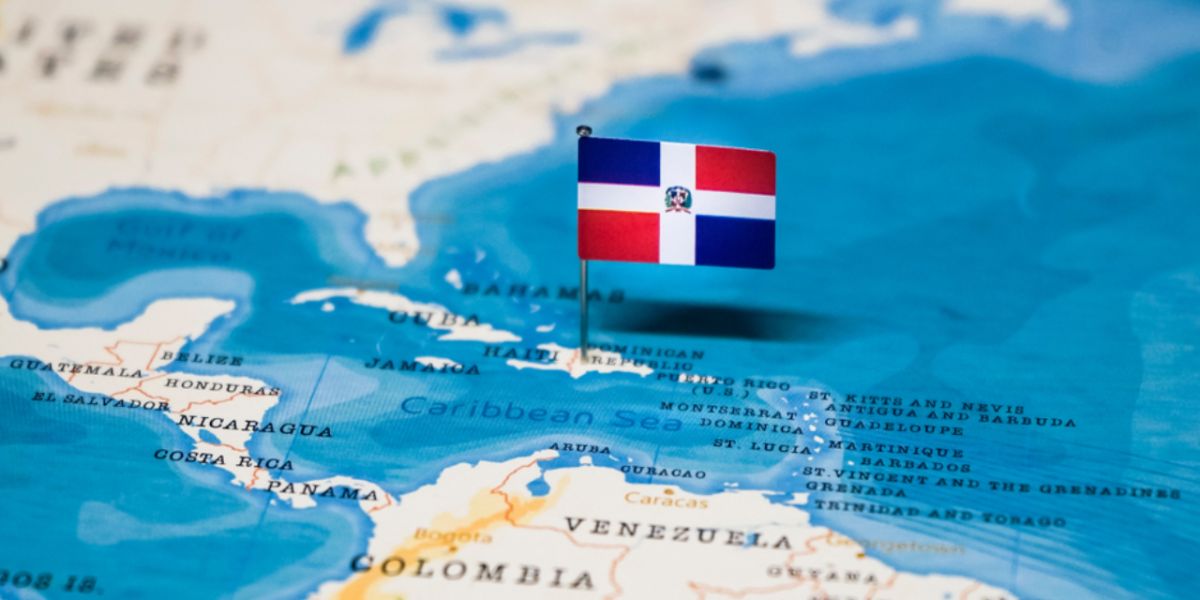
Before traveling to the Dominican Republic, whether for tourism, to work, to study, or to settle down, it is best to be aware of related conditions and the procedures you will have to follow.

Formalities in the Dominican Republic
Nationals of only a few countries can travel to the Dominican Republic simply with a passport. Still, the vast majority of people have to purchase a tourist card for USD10 at their point of entry to the country or prior to departure online or at their local Dominican consulate. Those staying for longer, working, or studying will need a different type of visa. Here is more information on visas for the Dominican Republic.
The following travelers are exempt from the Tourist Card:
- Dominican citizens;
- Foreigners residing in the Dominican Republic;
- Those holding a valid Dominican visa;
- Foreign diplomatic and consular officials accredited in the country for the duration of their functions, entering on an official mission;
- Visitors using non-commercial private aviation provided that entry to the country is for sports, recreational, executive, tourist, and/or business purposes and that the aircraft used for transportation weighs no more than thirty thousand pounds (30,000) or has a capacity of up to a maximum of 12 passengers (Decree no. 169-08);
- Foreigners with a border resident card, authorizing them to enter and exit the national territory on the same day. Article 78 of Regulation no. 631-11 of General Migration Law no. 285-04 specifies that the use of this card is only valid in the Dominican border province bordering the residence in Haiti of its bearer;
- Citizens of Argentina, Chile, Ecuador, Israel, Japan, Peru, South Korea, and Uruguay;
- For visitors arriving in the country by air, the following are exempt from including the Tourist Card:
- Airline tickets sold in the Dominican Republic,
- Airline tickets purchased by transit passengers whose final destination is not the Dominican Republic.
The tourist card is valid for 30 days, during which time you cannot work. If you overstay, you have to pay an overstay fee on departure.
Exit tax
You are required to pay a departure tax amounting to US$20 when leaving the country unless the tax is included in your return ticket.
What can I bring into the country?
The Dominican Republic regulates several items that visitors can bring into the country. Up to 200 cigarettes, 1 liter of alcohol, perfume, and gifts not exceeding USD 100 can be brought into the country duty-free.
The following items are banned:
- Automobiles, motorcycles, and motorboats. Spare parts for machines and vehicles may be subject to duties;
- If prescribed by a medical doctor, medicines are duty-free, but any other drugs or narcotics are strictly forbidden and could result in a lengthy jail sentence;
- Arms of any kind, plus ammunition, are strictly forbidden and could result in a jail sentence;
- Up to USD 10,000 is allowed in cash, but any more will be confiscated;
- When leaving the Dominican Republic, travelers cannot leave with more than USD 10,000 cash;
- The entry of animal, agricultural, and horticultural products (meat, cheese, fruits, vegetables, etc.) is strictly prohibited. All of these items will be confiscated upon arrival.
Where to arrive in the Dominican Republic
The vast majority of tourists arrive by air, and the Dominican Republic has nine international airports all over the country. They are served by a variety of scheduled and charter services, with direct flights to and from many cities in North America, the UK, and Europe. The country's main airport is on the south coast, around 20 minutes east of the capital of Santo Domingo. It is called Las Americas (SDQ) and has regularly scheduled flights from all over the world.
There is a second international airport in Santo Domingo on the West side. It was formerly called La Isabela but has been renamed Dr. Joaquim Balaguer (JBQ). It is mainly used for inter-Caribbean flights with Caribair and domestic shuttles.
The main international airport in the North is between Puerto Plata and Sosua, called Gregorio Luperón (POP), serving those two areas plus Cabarete. It is mainly a tourist airport with regular flights from many cities in the USA, Canada, the UK, and Europe. There are charter flights as well as scheduled flights.
In the Northeast peninsula, there is an international airport in Samaná: President Juan Bosch (AZS), specifically for the growing tourism in that area, especially in Samaná itself, as well as Las Galeras and Las Terrenas.
The busiest airport in the country is in the East. Punta Cana Airport (PUJ) serves the east coast resorts of Punta Cana and Bavaro. It is also used for those traveling to La Romana, Bayahibe, and Juan Dolio in the Southeast. It is, again, mainly a tourist airport, with hundreds arriving every day. Flights, mostly chartered but some scheduled, come from all over the world.
There is a small airport in the Southeast at La Romana (LRM), which is part of the luxury Casa de Campo complex. There are scheduled and chartered flights there, too, especially in the winter months – from November to April – to serve the cruise port in La Romana. Although the airport is known as La Romana, many tour companies refer to it as Casa de Campo airport.
The second-largest city in the Dominican Republic, Santiago, has an international airport (STI) that has scheduled flights from the USA, mainly from New York, Miami, Atlanta, Newark, and Orlando.
Given the size of the Dominican Republic, you need to ensure that you are arriving at an airport close to your final destination, as should you choose the wrong one, it can take a significant amount of time and money to cross from one side to the country to another. For example, if you arrive at Punta Cana airport and wish to stay in Sosúa on the North coast, that will take around 7 to 8 hours in a cab and even longer on a bus.
Not surprisingly, being an island, the Dominican Republic is a cruise destination. Several major cruise lines call into one of the four main ports: Samaná in the Northeast, La Romana in the Southeast, Santo Domingo, the capital city, and Puerto Plata in the North. Most of the cruises begin in the United States and call into the Dominican Republic on their way down to the rest of the Caribbean islands. The cruising season starts in November and lasts until the end of April. If you wish to leave a cruise ship in the Dominican Republic to stay in a hotel or resort, just make sure that the cruise dock is near your accommodation.
There is also a car and passenger ferry that sails from the Dominican Republic to Puerto Rico, taking around 13 hours. It has been known to go out of service for 6 months or so at a time, so it is always worth checking if it is still running. While there are regular air flights, the ferry can be helpful if you have a lot of things to buy in Puerto Rico, as there are no baggage limits, unlike on planes.
Important:
You should be aware of a few points when arriving in the Dominican Republic.
When you collect your baggage and walk towards Customs, they will not let you pass through until they have matched your luggage to your baggage receipt sticker, which is usually stuck to your ticket. Make sure you have this available.
All of the airports have transport unions, so you cannot simply hop on a bus. You need to take an airport taxi or have a pre-arranged taxi or personal pickup transport. Although the taxi prices are regulated and are prominently displayed on a board, it is always worth checking the price before getting into the taxi and checking if they will charge additional for luggage. For those on a budget, it can be worth going to the Departures drop-off area and seeing if a taxi that has just dropped some passengers off is prepared to take you to your destination at a lower fare.
What traditions to be aware of and not to miss in the Dominican Republic
One thing that makes traveling fun is finding all the typical and traditional things about a country. Exploring new landscapes and new people with their customs and ways of living that people will only experience in that place.
The Dominican Republic is marked by a vast mixture of different cultures and, therefore, has a lot to offer to its visitors.
When going to the DR, you have to be prepared for a lot of music, parties, and dancing. Don't confuse the typical dancing style with salsa, though – it's called merengue! Not to be confused with the dessert here – although once tried, you probably won't be able to stop anymore. Merengue is fun and very trendy! Famous for its captivating lyrics and fast-paced movements, it will get you hooked in no time.
Make sure to find enough room to really enjoy the nightlife while you're visiting the Dominican Republic, and this is definitely one of the best ways to discover its culture! Speaking of parties – a thing you can't miss if you're there in February is the “Carnaval de la Vega”. Every Sunday of the month, the streets will turn into an ocean of colors and crowds stomping their feet off. Back in the day, the carnival used to be a celebration for good combating evil. Today, its reason has turned into a general expression of freedom and independence for the Dominican Republic.
Like any other nation, the Dominicans also have their tradition when it comes to the end of life. Funerals are not just a single-day event that you can attend or not. If someone you know has died, you're obliged to go and pay your respects! The celebrations last 9 whole days and start off with 3 days of mourning, followed by 3 days of turning your thoughts inward in silence, and 3 more days to let go and make peace with their parting.
One of our favorite traditions involves Christmas. The Dominicans have their own version of Secret Santa called “Un Angelito” – which means a little angel. Each family member writes their name on a piece of paper and then mixes it with the others in a bag. Every person gets to pick on paper and has to surprise the owner every day throughout the Christmas holidays with a little something.
Dress code: Fashion!
In the Dominican Republic, it's all about style. People love good clothing and named brands with high-quality fabrics – especially US labels. Even if their wages don't reflect their clothing preferences, they will always prefer to work a bit harder so they can afford fashionable outfits.
If you're looking for a date in the DR – make sure to bring your best pieces with you.
Sports
The two most favorite types of sport are baseball and boxing.
Many of their top baseball players are members of the American Mayor League Baseball! If you want to connect with locals, it might be wise to freshen up your memory about the who's who of baseball.
Food: All the flavors
When on the road or moving to a new country, one of the best ways to get to know it is to taste it! Food plays a crucial role in every country's culture and directly reflects its essence.
The typical Dominican dish no visitor can miss out on is called Sancocho. It's a stew loaded with fresh veggies and meat and will be served for special occasions and social gatherings. The classic version has yucca, yams (like a sweet potato), and squash, and it also has corn, a lot of garlic, and different types of meat.
Also very famous is la Bandera Dominicana, the Dominican Flag. It consists of white rice, meat, and red beans, but most of the time, you will also find different foods like avocado, fried plantain, or salad with it.
Mangú, which sounds a lot like the sweet yellow fruit named mango, definitely has made it into our top Dominican meals list. The dish's simplicity makes it so unique: cooked and mashed green plantain served with sliced and sauteed red onion with vinegar. Combined with eggs, it also serves as a hearty breakfast!
Useful resources and links:
Most airports are owned by Aerodom, whose website has all the relevant information by airport.
Puerto Plata airport (POP) - Tel: 809 291 0000
Samana airport (AZS) - Tel: 809 338 5888
Las Americas (SDQ) - Tel: 809 947 2225
Dr Joaquim Balaguer (JBQ) - Tel: 809 826 4019 Ext 112
La Romana (LRM) - Tel: 809 813 9000
The other airports are private:
Punta Cana International (PUJ) – Tel: 809 959 2376
Santiago (STI) – Tel: 809 223 8000/ (809)-233-8080
Ferry Santo Domingo to Puerto Rico – Tel: 809 688 4400
We do our best to provide accurate and up to date information. However, if you have noticed any inaccuracies in this article, please let us know in the comments section below.








